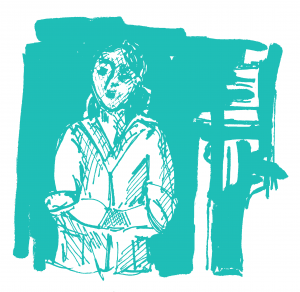
Cognitive Behaviour Therapy (CBT)
CBT has been shown to help people cope with:
- Distressing experiences of psychosis, such as voices or upsetting beliefs
- Depression
- Relapse risk for mania and depression
- Anxiety and other related problems
CBT is usually done in partnership with the service user and a CBT therapist (often a psychologist, social worker, psychiatrist or mental health nurse who has undergone specialist training).
The British Association of Behavioural and Cognitive Psychotherapy have useful leaflets which are free to download which will give you more information about CBT.
10 Fascinating Facts About C.B.T.
1. It is short term compared to other types of intensive therapy
Typically people have it over 6-12 months
2. It is usually done on a one to one basis
Although, sometimes it’s done in groups or with families
3. It doesn’t help everyone
Not everyone will respond to CBT and it won’t necessarily change people’s psychosis / prevent future mood episodes
4. It sometimes helps people to cope better or feel less distressed
It might help people to feel less depressed or anxious about their situation
5. It is personalised to suit the individual
Individual goals are decided on between the therapist and service user
6. It is often used together with medication or other treatment approaches
People usually don’t change their other treatments when they have CBT and continue with medication and other things
7. It is confidential
Therapists agree to keep things confidential unless the service user discloses that they want to share information with others, or if the therapist thinks they are at risk
8. It breaks problems down into three areas: the way the problem affects our feelings, our thoughts and our behaviour
The therapist helps the individual to come up with ways of overcoming problematic thoughts, feelings or behaviours
9. There aren’t any known negative side effects
Though it does require time and commitment
10. People are taught to act as their own therapist
Over time people learn to change their thinking patterns and modify their behaviours in ways that improve their wellbeing. This can take time and lots of practice
Case Study

Diane Sawyer – The People’s Therapist!
Peter had been hearing voices for nearly 2 years when we met. The voices were very distressing because they told Peter that people in his family and his close friends hated him and were trying to hurt him. Peter had tried ignoring the voices but found this very difficult and instead he withdrew from his friends and family.
In CBT Peter was able to talk to me about his voices and about his relationships with his friends and family. Although he didn’t believe that people were trying to hurt him, he did sometimes worry that people didn’t like him. Peter told me this feeling had begun when he was at school where he had been badly bullied.
We worked together on helping Peter build a more positive picture of himself by looking at all the positive things he had achieved in his life. Peter learnt to test out what his friends and family really thought about him by asking them directly rather than jumping to conclusions based on his worries. This made him feel more confident and he was able to challenge the negative things the voices said. Over time he found that the voices were easier to dismiss and became less frequent.
How do you get CBT?
In some mental health teams there are specialist therapists who can offer CBT. Your relative’s Care Coordinator /GP can make a referral. Sometimes there are waiting lists for this.
If you cannot get a referral for CBT through the NHS, you could consider paying to see a therapist privately. The BABCP website has information about finding a therapist.
There are also many helpful self help books and websites which offer step by step CBT guides to overcome many problems. These are listed in the Resource Directory.
Watch Professor Jo Smith providing information on cognitive behaviour therapy


